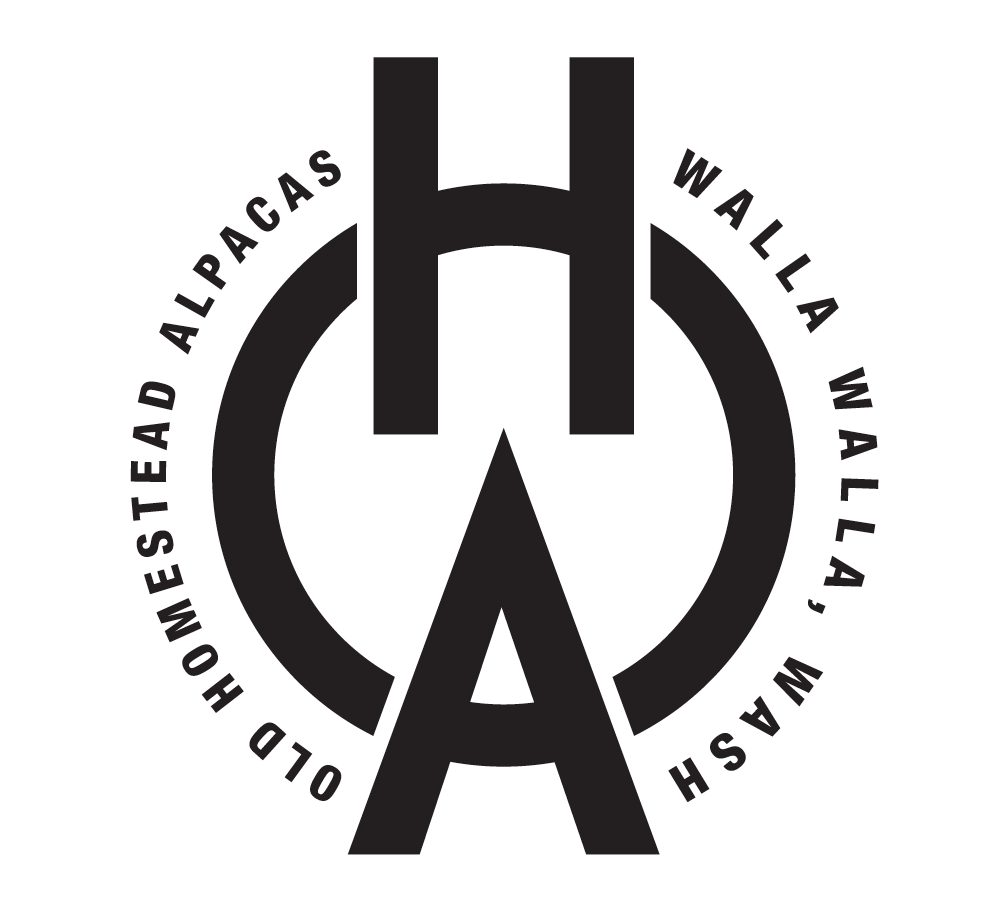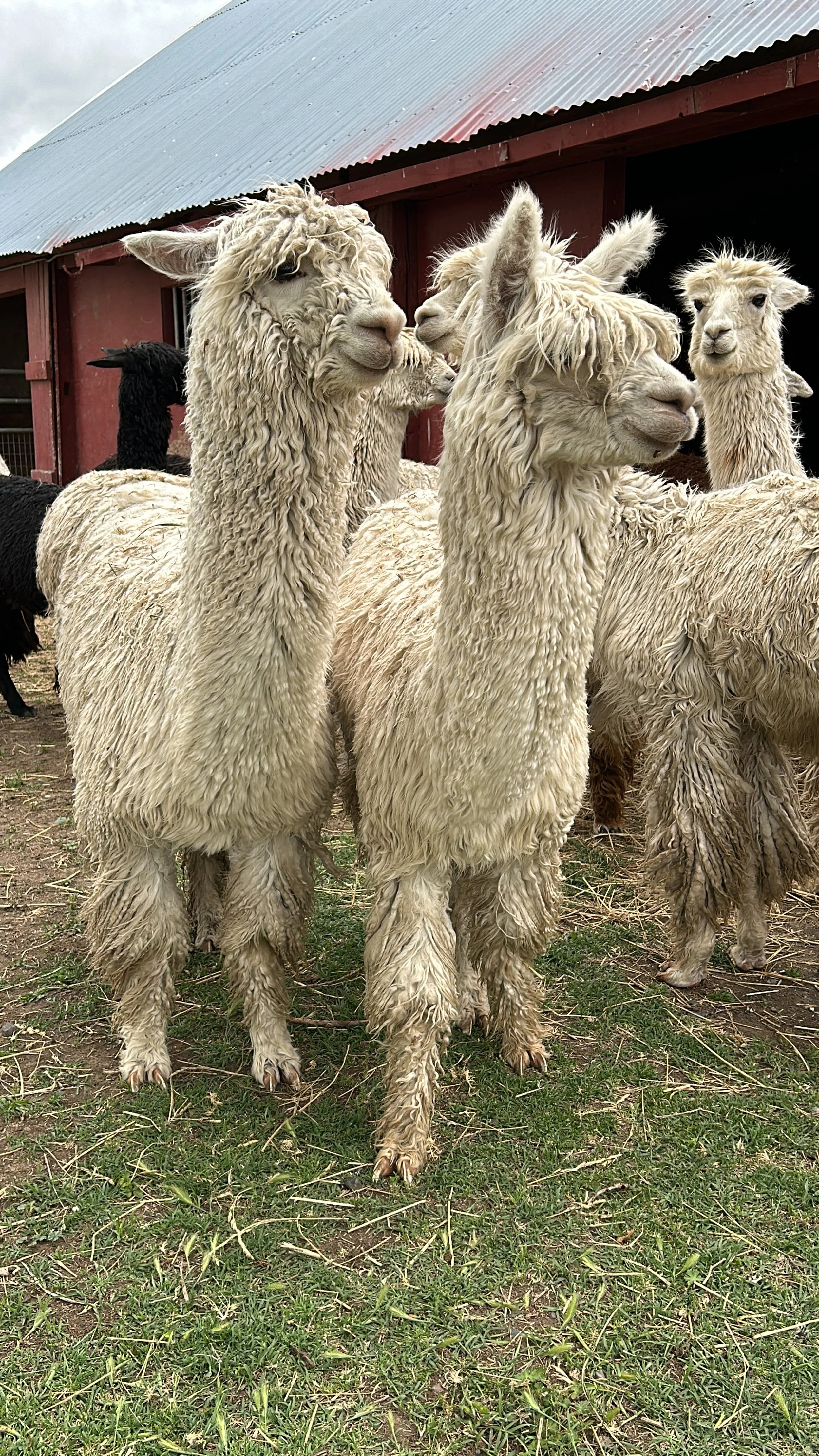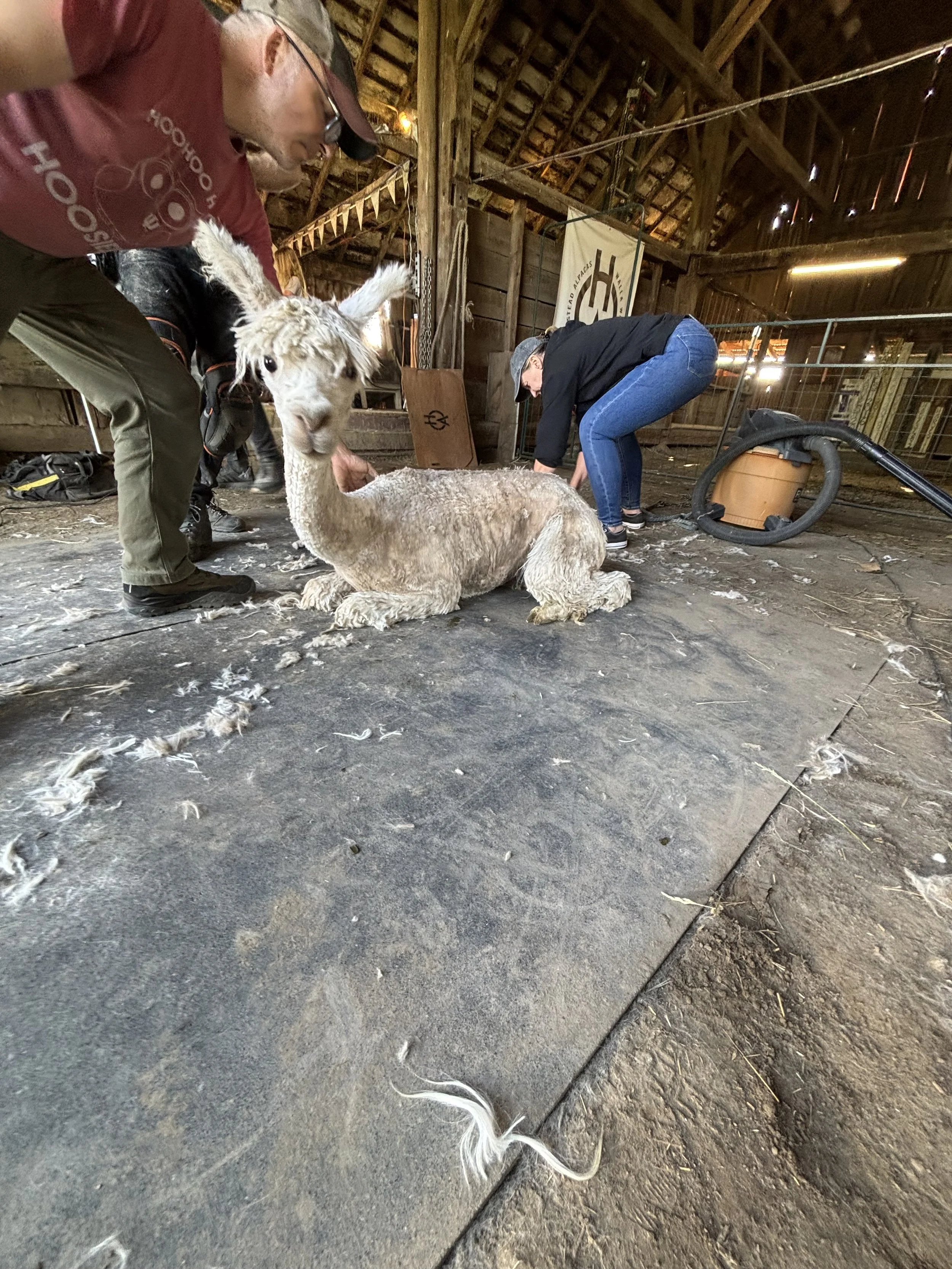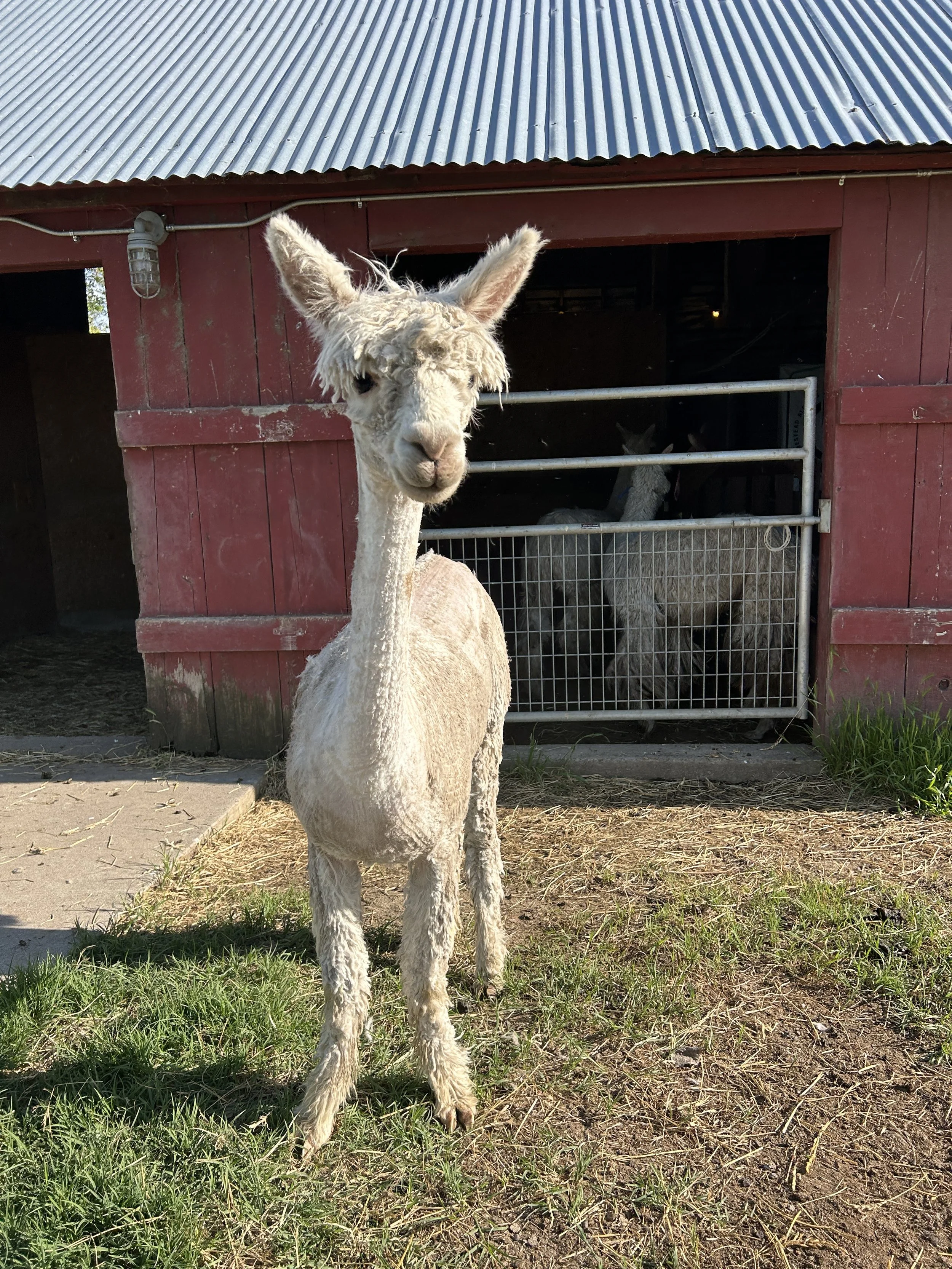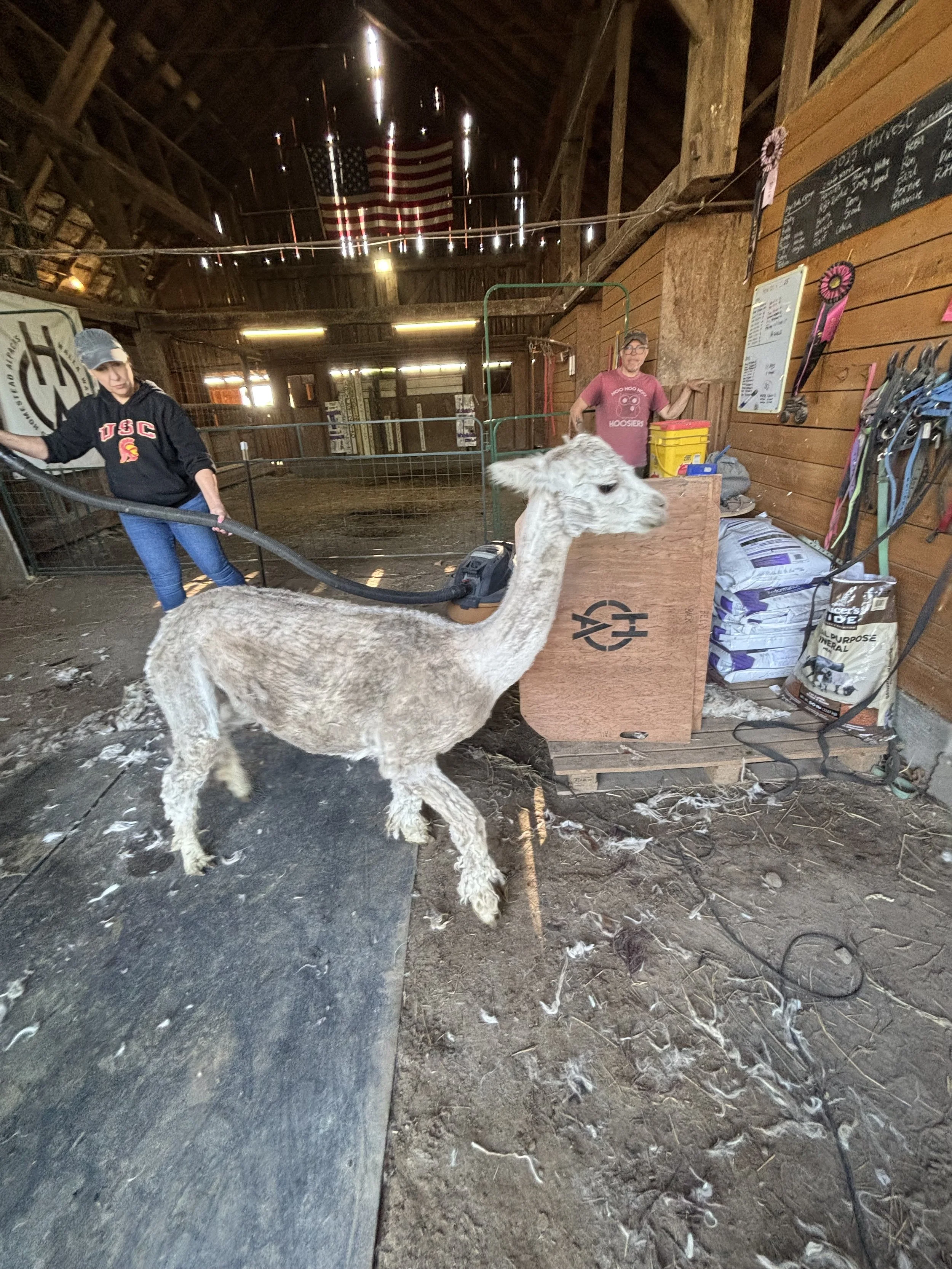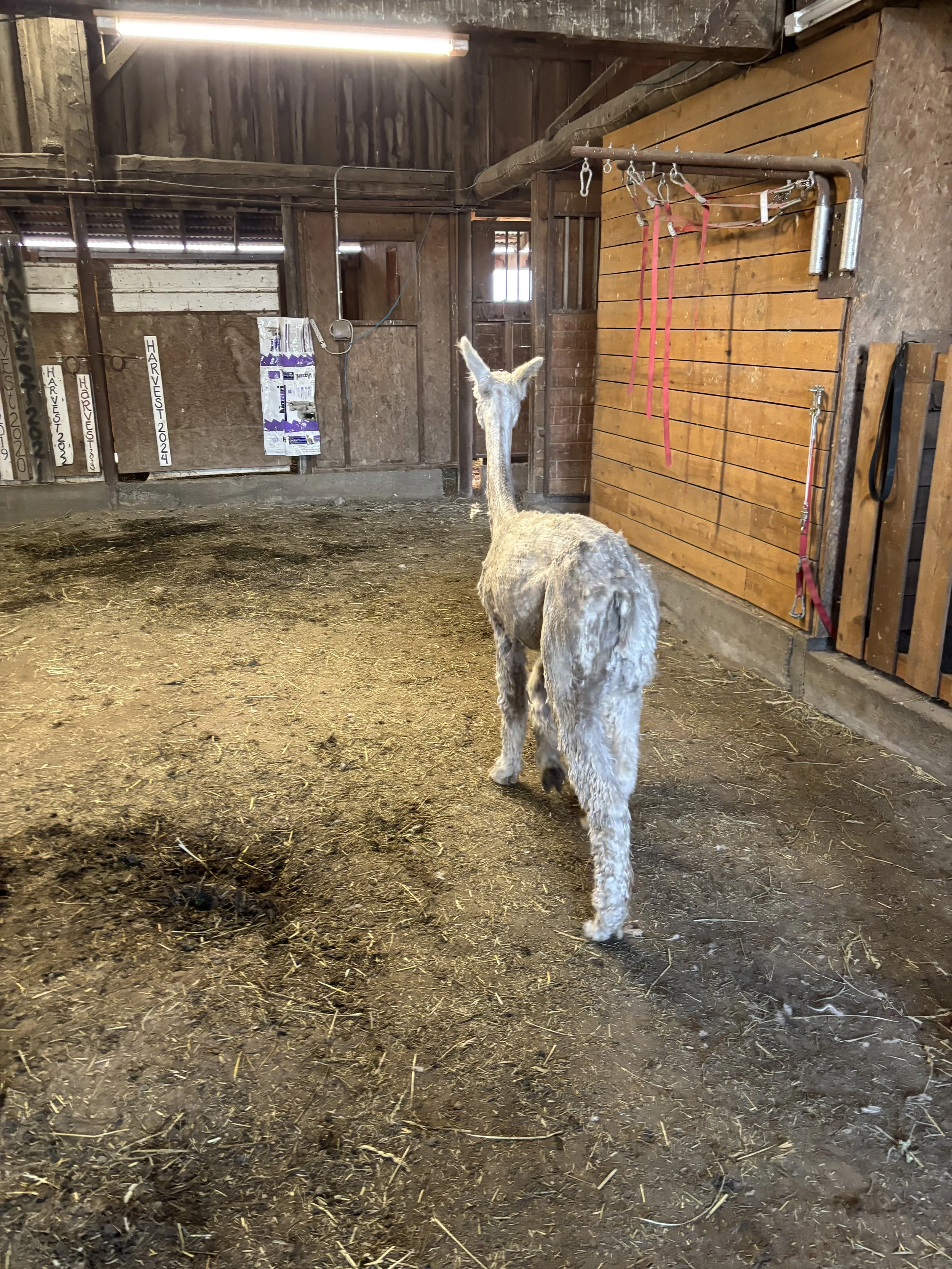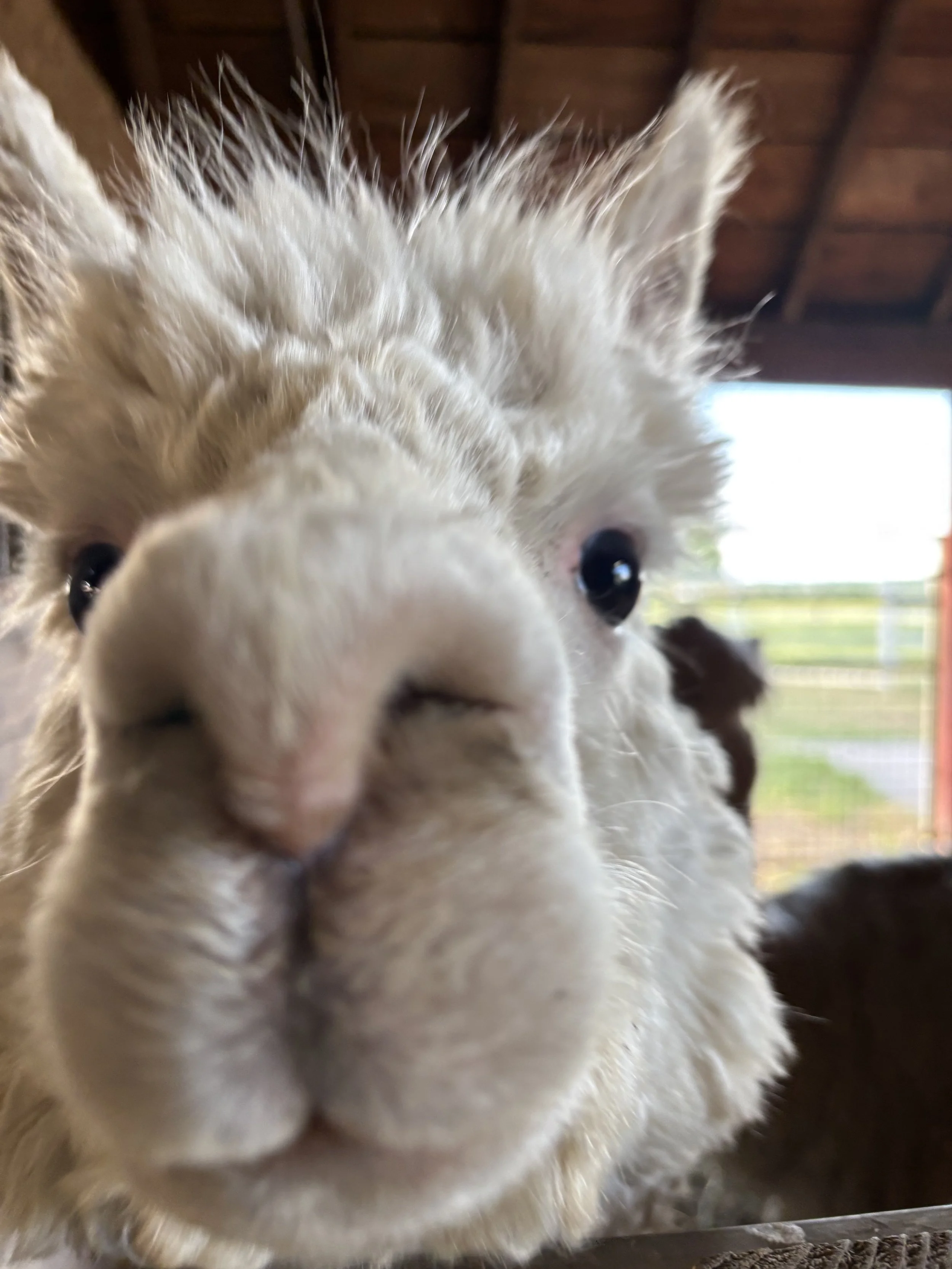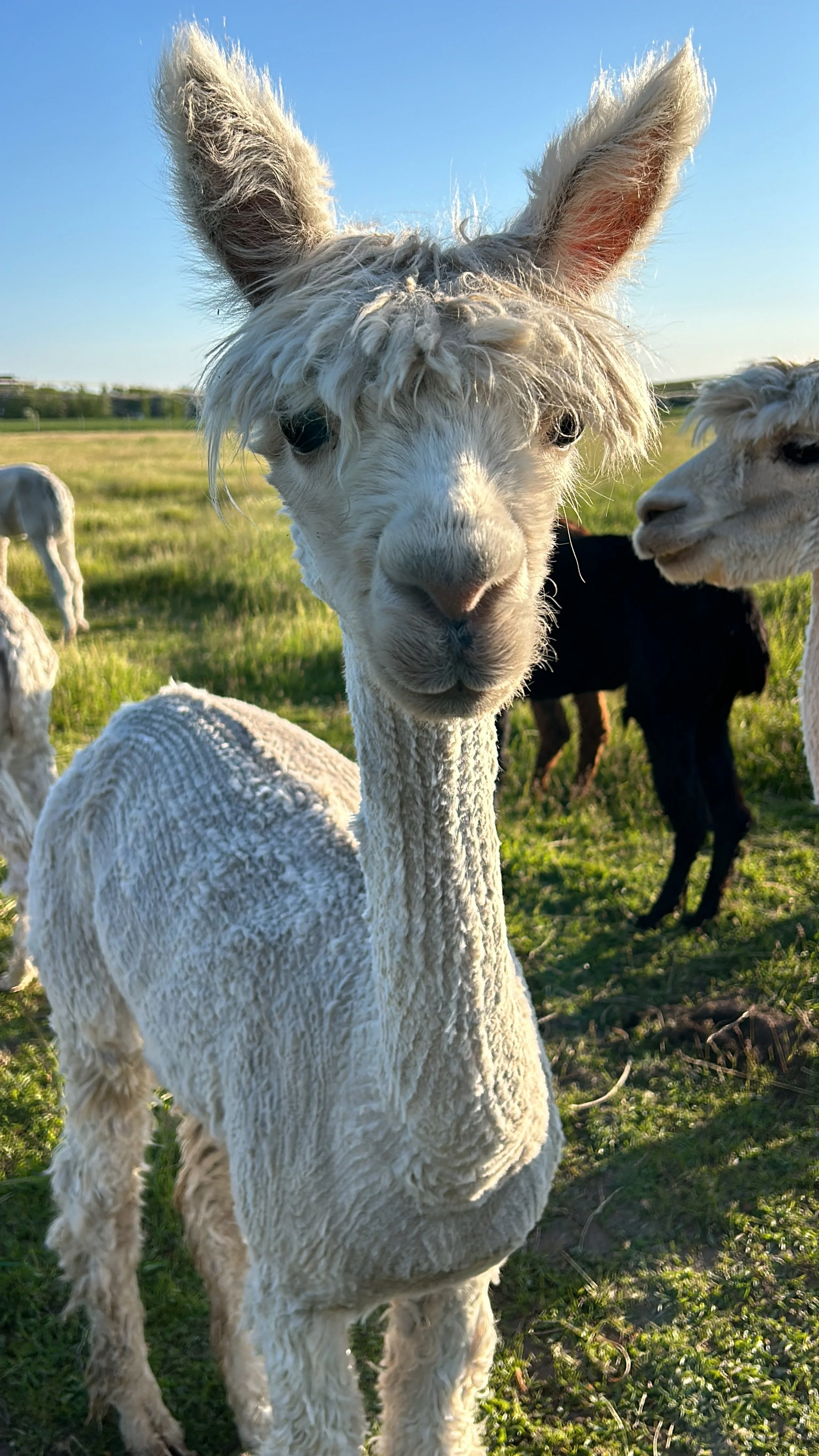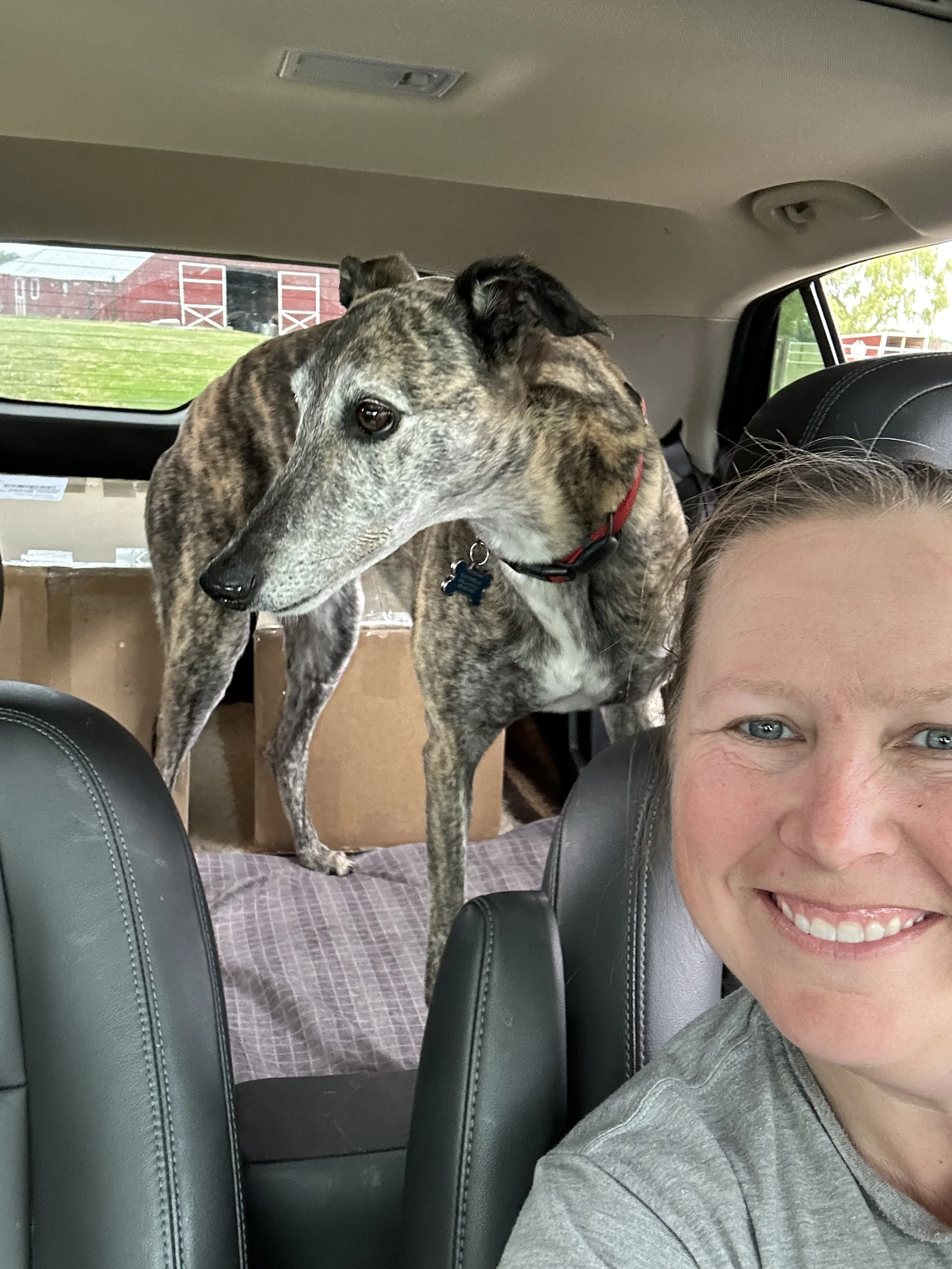Growing Clothes - the Making Phase
This is part 2 of my 3 part series giving you the behind-the-scenes looks at “Growing Clothes” - as we bring to life our Harvest Knitwear Collection of hats, scarves and mittens using our alpacas fiber.
With our annual fiber harvest on May 16th, we just completed the Growing Phase so now it’s time to show you the various pieces of the Making Phase.
But first - here’s Dixie and Winnie enjoying their last few moments in full fleece!
Just as a recap of the overall process -
Here’s what shearing looks like.
The shearing crew we used travels around all spring and summer doing this. It’s its own job, as hopefully I’ll be able to demonstrate why in this post.
We bring each animal to the shearing area - which is just two stall mats in the main part of our barn. It’s a firm but easily cleanable surface.
Our shearer uses the rope-and-pulley method. The ropes and pulley attach to stakes that we temporarily pound into the ground. Then ropes are fastened around the alpacas ankles/feet to allow us to gently lay them out on the mat.
This position does not hurt them. In fact, it protects them. They’re stretched just taut enough to secure them so they don’t flail around. The shears have electric blades that move rapidly. Think of clippers used to shave human hair, but make them wider, bigger and without a guard.
Even with the steady hand of the shearer, you don’t want the animal to be able to move at all as it will very easily result in a nick or cut.
All told, from the time the animal gets to the shearing mat and is clipped and done — about 6 minutes. So it’s a relatively swift job that only happens once a year.
While they’re getting the big hair cut, we’re also giving mani-pedis, vaccinations and supplements. After a couple spritzes of fly spray, they’re back out on pasture.
Now that the fiber’s off - it’s time for the first step in the Making Phase!
The fiber mill does the vast majority of transformation for us - but before it goes to them, it is skirted. I don’t really know why it’s called that but it simply means we pick out all the debris and other non-desirable parts from each fleece that we don’t want in the yarn.
This is everything from bits of hay and seed heads from the pasture, plus leaves, tiny sticks — you’d be surprised!
But I also take out any short fibers. To make a great garment, you need a uniform yarn. Uniform yarn comes from fiber of the same length and fineness.
If there’s one scratchy hair mixed in with hundreds of soft, fine fibers - your skin will feel it - trust me!
Especially since the garments in the Collection are worn close to tend skin (forehead and neck) - this is a critical, tedious process.
Initial skirting is done by my bestie Alex, a fellow fiber artist, as soon as the fiber is shorn off. She gets the vast majority of all the debris out, and then I do another round as I’m sorting each alpaca’s fiber into groups.
Because a little fiber goes a long way in making the garments, and because processing is an expensive endeavor, only the best of the herd gets put into the Collection each year.
I always start with a fiber processing plan in mind, but during skirting I actually get to see the quality firsthand. I group them into lots, then I put them in vacuum bags and tag them for the mill. Because shipping is done by dimensional weight, getting out all that air means I can fit more into a box.
With 27 alpacas, it took me all of Saturday and Sunday, and part of Monday, to get it skirted, sorted and into 4 large boxes. It’s a big, dirty job but I kinda love it.
I always take a car selfie with the boxes to mark the milestone completion of this 365 day effort of growing!
As I type this, the fiber is en route to the fiber mill — scheduled to arrive on Friday — exactly one week after it was shorn.
The Fiber Mill
We use a mill in Minnesota and a lot of folks wonder why we don’t have a closer fiber mill option.
The best way I can put is it this — there are not that many fiber mills in existence in the USA.
Of those, not all of them will process alpaca — some just can’t because they’ve tooled & adjusted their milling equipment to work with sheep wool fibers.
And while mill equipment is industrial, it’s often old and sometimes antiquated - the type of which cannot be adjusted with a simple the click of a button. But rather it takes major effort, plus a lot of labor and R&D to have the equipment run sheep’s wool and then ultra fine and often slippery alpaca fiber.
Most mills choose to specialize and only accept fiber types within their machines existing parameters.
The mills that do work with alpaca fiber often require that it’s blended with 30 - 50% wool.
As a business person, I completely understand. It’s really no different than me raising alpacas versus raising sheep. It’s just my preference, and what works best for me.
And to that end, my biggest preference for the Harvest Knitwear Collection is that its comprised only of my fibers. Only the alpaca that I grew here on my farm.
Since our annual Collection is machine knit - and similar to the fiber mill - their machines are also tooled for a very specific type/thickness of yarn. I’ll share more about that in a separate post.
I’m just so grateful the mill we use will not only spin our fiber into yarn at 100% without any wool added — but they can spin it to the very tiny yarn the knitting machines require. Even if that means it has to be shipped pretty far.
Yield
This year I boxed up 20 pounds for knitwear, 36 pounds for hand crafting yarn, and 22 pounds for dryer balls. That doesn’t mean I’ll get exactly that much back. After all, the milling process is working with really fine fibers - there’s always a bit of loss in processing.
Getting it out & in the mail as quickly as I did is always a bit of a heavy lift for me. For starters, it’s not the only thing going on at the farm. The dye gardens are being planted, as are the cutting gardens. The farmer’s market has resumed, so there’s that too.
But I make a one-week ship out a priority because getting it to the mill as fast as possible is critical.
Not only because I reserved my slot in the mill production queue a year ago, but even with their industrial equipment, it’ll take the mill several months to transform it from raw fiber to a finished yarn.
The last several years, I’ve been able to achieve my goal to get yarn and knitwear done and back to the farm by early fall so that I can get it all dyed up and then offer it for sale before winter.
I really try to beat the holiday shopping rush because…let’s face it by fall I’m downright exhausted…but also because I need to sell it so that I can recoup and pay all the manufacturing costs I’ve incurred since the beginning of the year.
Getting it made, dyed and then listed for sale in the fall allows me to slow down during winter to recharge. There’s still plenty to do in winter (like 3x a day feedings and such) but not having to also be busy trying to sell really lets me refocus and enjoy the holidays with my family, too.
I’ll share more behind-the-scenes as our fiber continues to work its way through milling. But for now, please enjoy the freshly shorn noodle necks and bobbleheads!
